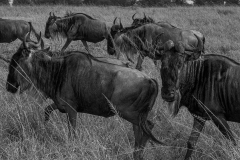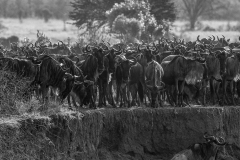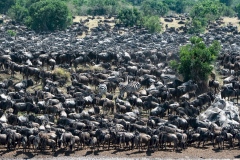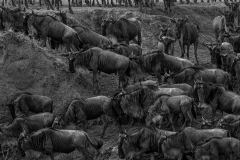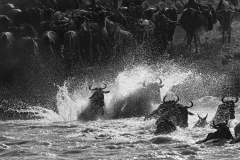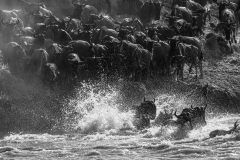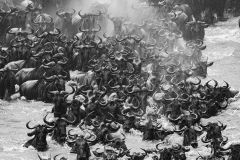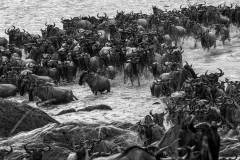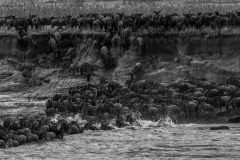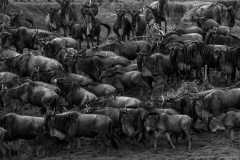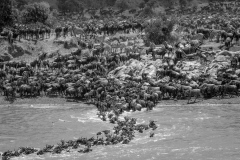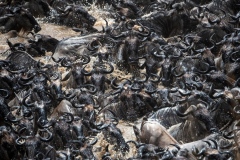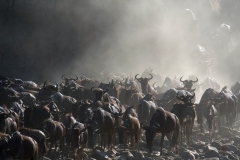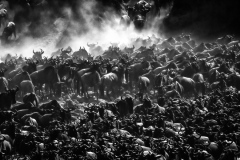The Great Migration is the annual movement of wildebeest, zebras, and other grazing animals across the Serengeti-Mara ecosystem in East Africa. It’s considered one of the greatest natural spectacles in the world and involves the movement of over 1.5 million wildebeest, as well as hundreds of thousands of zebras and gazelles, in search of food and water. The migration typically starts in the southern Serengeti and moves northward to the Maasai Mara in Kenya, and then back south again in a cyclical pattern that is driven by the rainy seasons. The exact timing of the migration can vary from year to year, but it typically takes place between June and September.
One of the most notable river crossings during the Great Migration is the Mara River, which separates the Serengeti in Tanzania from the Maasai Mara in Kenya. The wildebeest must cross the Mara River to reach the greener pastures of the Maasai Mara during the dry season. The crossing is a dangerous and deadly event as the wildebeest have to jump off cliffs and swim through crocodile-infested waters.
Another significant crossing is the Grumeti River, which is located in the western corridor of the Serengeti. The Grumeti River is known for having large crocodiles that prey on wildebeest during their crossing.
This Migration is not a straight path and there are different paths that the animals follow depending on the time of the year, the amount of rainfall, and the location of food and water. The crossings are dangerous and many animals lost their lives during the migration.
Overall the great migration is a natural spectacle that attracts many tourists, photographers and wildlife enthusiasts.
For the past few years, fires have been set in some areas, forcing animals to make frequent crossings. This is all because of the growing tourism, which has increased significantly over the years. Of course, there are also lightning strikes, however …
It has been an experience I have had several times and is, only when accompanied by a good guide, a breathtaking sight.
Last update: 2025/02/08

